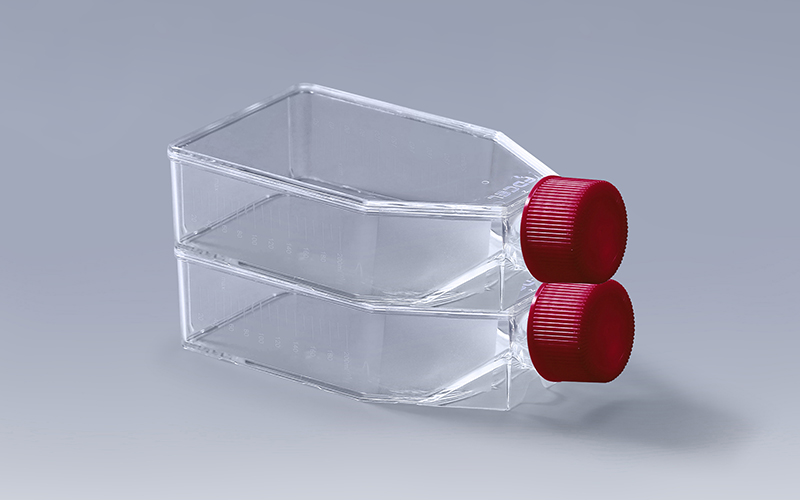The primary use of cell culture flasks is for in vitro cultivation of cells and tissues. By providing optimal temperature, humidity, nutrient supply, and gas conditions, they support cell growth and division, serving as a fundamental platform for research in cell biology, disease mechanisms, and drug effects. Beyond this, their applications also include:
Drug Screening & Testing
In drug development, cell culture flasks are widely used for drug screening and toxicity testing. By culturing human or animal cells in these flasks, researchers can evaluate drug efficacy and side effects, optimizing drug design and minimizing potential risks.

Vaccine Development
Vaccine research heavily relies on cell culture flasks. During early-stage development, they are used to culture viruses or bacteria, enabling scientists to study their characteristics and develop effective vaccines. For example, many viral vaccines are produced using cell culture techniques.
Gene & Protein Research
Cell culture flasks play a crucial role in gene expression and protein synthesis studies. Through in vitro cell culture, scientists can investigate gene functions, protein interactions, and cellular signaling pathways in depth.
Toxicology & Environmental Assessment
These flasks are also used to assess the impact of chemicals and environmental factors on cells. By culturing human or animal cells, researchers can rapidly detect chemical toxicity, providing scientific insights for environmental protection and public health.
Stem Cell & Tissue Engineering
In stem cell research and tissue engineering, cell culture flasks are essential for stem cell expansion, differentiation, and artificial tissue construction. These studies open new possibilities for regenerative medicine and disease treatment.
Whether in basic research or clinical applications, cell culture flasks play a pivotal role in advancing science and medical innovation. Choosing high-quality flasks ensures higher experimental success rates and more reliable results for your research.
The FAI climbed 5.9 percent year-on-year in the first 11 months of 2018, quickening from the 5.7-percent growth in Jan-Oct, the National Bureau of Statistics (NBS) said Friday in an online statement.
The key indicator of investment, dubbed a major growth driver, hit the bottom in August and has since started to rebound steadily.
In the face of emerging economic challenges home and abroad, China has stepped up efforts to stabilize investment, in particular rolling out measures to motivate private investors and channel funds into infrastructure.
Friday's data showed private investment, accounting for more than 60 percent of the total FAI, expanded by a brisk 8.7 percent.
NBS spokesperson Mao Shengyong said funds into weak economic links registered rapid increases as investment in environmental protection and agriculture jumped 42 percent and 12.5 percent respectively, much faster than the average.
In breakdown, investment in high-tech and equipment manufacturing remained vigorous with 16.1-percent and 11.6-percent increases respectively in the first 11 months. Infrastructure investment gained 3.7 percent, staying flat. Investment in property development rose 9.7 percent, also unchanged.
 English
English


















































